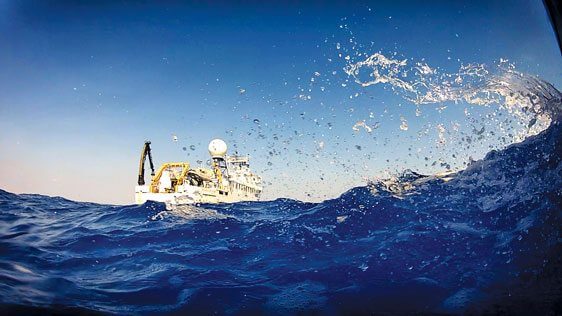The BP Deepwater Horizon oil disaster presented many challenges including how to restore fish or corals living on the Gulf of Mexico seafloor. Our leaders on the Gulf Coast are now proposing a number of projects to restore the Gulf comprehensively, and a couple of these projects could make a real difference for the “blue water” of the Gulf.
When the RESTORE Act was signed into law in 2012, it created the Gulf Coast Ecosystem Restoration Council, made up of 11 state and federal government agencies. This group is charged with comprehensive ecosystem recovery and has elected to focus on five thematic restoration goals: restore and conserve habitat, restore water quality, replenish and protect living coastal and marine resources, enhance community resilience, and restore and revitalize the Gulf economy.
The first round of funding under this body will spend between $150 and $180 million on habitat and water quality projects in the Gulf. Fifty projects have been proposed by 11 council agencies, and the line-up includes some great concepts for restoring wetlands critical for birds, juvenile fish and water quality, and mapping the Gulf seabed habitats to better understand fishery productivity.
Projects that restore habitat and water quality are, of course, good for fish and wildlife. They provide the fundamental building blocks on which quality hunting and fishing opportunities rest. But there are more good ideas proposed – about $750 million worth – than there are dollars to spend, so public input on where to invest these funds will play an important role.
Among the many projects proposed, two stand out for lovers of the ocean. The first is a simple idea – replanting lost habitat – taken to the extreme depths of the Gulf of Mexico. The scientists at the U.S. Geological Survey and their partners propose a project to monitor the deep-sea coral communities in the Gulf, document how some of them were damaged by the BP oil disaster, and use innovative restoration techniques to help spur recovery of these slow-growing, centuries-old colonies.
The deep-water coral project is going to examine the health of different coral communities within a couple hundred miles of the Deepwater Horizon blowout site, assess their damage, map previously unknown coral areas and track the currents that bring nutrients and food to these branching, tree-like animals. In reality, there are precious few other ways to restore these incredible communities, and this project could be the most significant thing to happen to the Gulf’s deep-sea coral reefs since their discovery.
The other project with profound implications for marine restoration is a National Oceanographic and Atmospheric Administration (NOAA) project that would set up a Gulf-wide network for habitat mapping and water quality monitoring. The water quality component proposes a real-time, integrated system of sensors and computer analysis to link the various sources monitoring the Gulf’s water quality into a single, central hub. This will allow managers to diagnose problems and implement solutions faster, and across jurisdictions, from the upland forests to the open Gulf. Things like agricultural runoff and red tide have dramatic impacts on human and natural resource health, and this network will bring together all of the information in a single place, and analyze it to improve management decisions.
NOAA also proposes to create a habitat mapping network which will, similar to the water quality network, pull existing information together and fill in missing pieces of the map. The Gulf is home to an amazing and diverse suite of plants, animals and seafloor types. Detailed maps of how these elements work together are critical to understanding the complexities of their interactions. Understanding the Gulf’s seafloor, as well as the plant and animal habitats drawn to its features, helps us more clearly assess and more effectively manage the Gulf’s natural capital. From recreational and commercial fishing, to energy production, to wildlife-watching, managing all of these activities to avoid conflicting uses of natural resources depends on our knowledge of the Gulf’s seafloor communities.
The BP oil disaster began in the deep sea, and we think these projects are a good start to restoring the Gulf’s offshore habitats and wildlife.
Kara Lankford is the Interim Director of Ocean Conservancy’s Gulf Restoration Program. She’s a lifelong resident of the Alabama Gulf Coast.
Ocean Conservancy educates and empowers citizens to take action on behalf of the ocean. From the Arctic to the Gulf of Mexico to the halls of Congress, Ocean Conservancy brings people together to find solutions for our water planet. Informed by science, our work guides policy and engages people in protecting the ocean and its wildlife for future generations.





